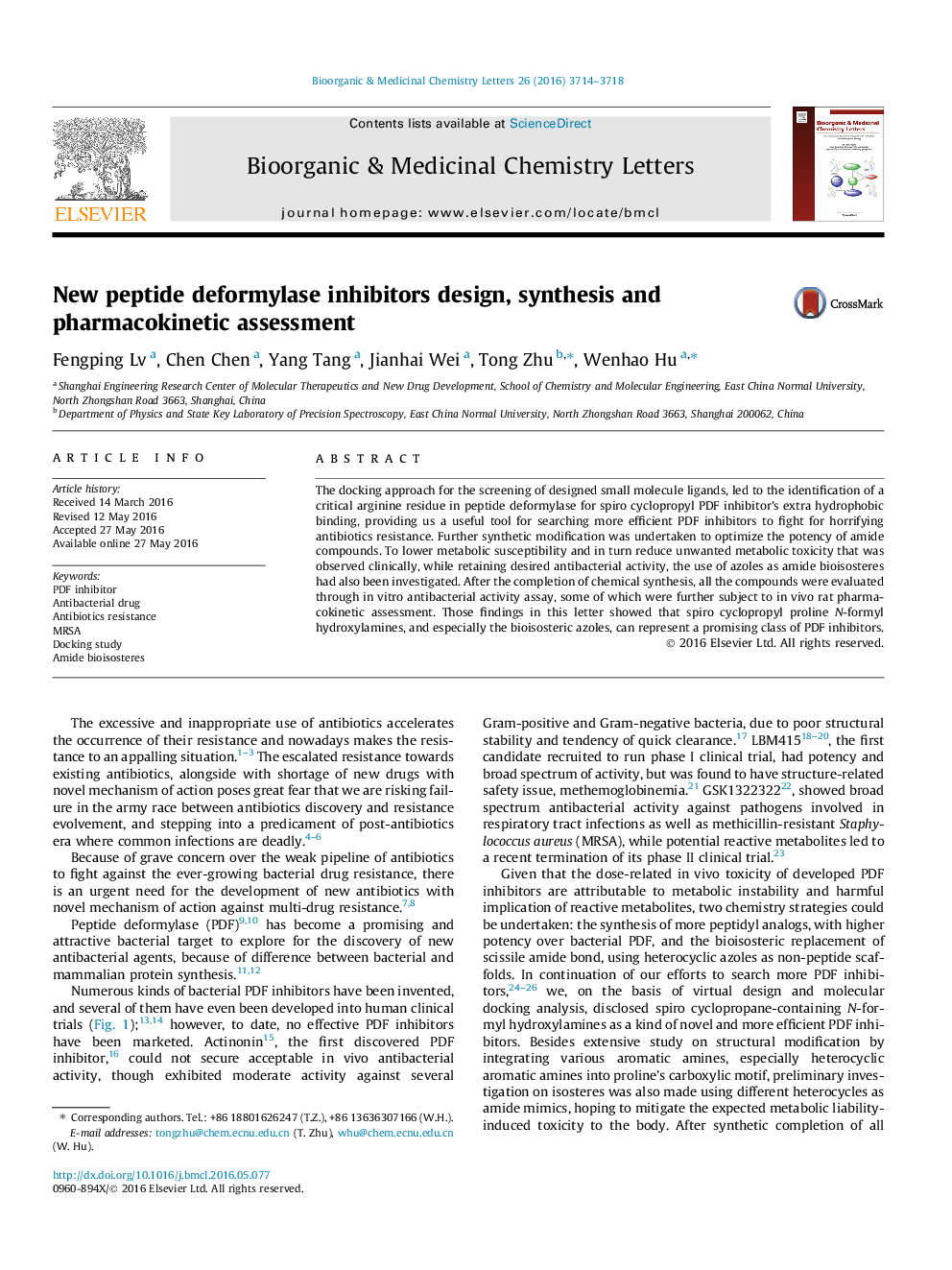| Article ID | Journal | Published Year | Pages | File Type |
|---|---|---|---|---|
| 1368546 | Bioorganic & Medicinal Chemistry Letters | 2016 | 5 Pages |
The docking approach for the screening of designed small molecule ligands, led to the identification of a critical arginine residue in peptide deformylase for spiro cyclopropyl PDF inhibitor’s extra hydrophobic binding, providing us a useful tool for searching more efficient PDF inhibitors to fight for horrifying antibiotics resistance. Further synthetic modification was undertaken to optimize the potency of amide compounds. To lower metabolic susceptibility and in turn reduce unwanted metabolic toxicity that was observed clinically, while retaining desired antibacterial activity, the use of azoles as amide bioisosteres had also been investigated. After the completion of chemical synthesis, all the compounds were evaluated through in vitro antibacterial activity assay, some of which were further subject to in vivo rat pharmacokinetic assessment. Those findings in this letter showed that spiro cyclopropyl proline N-formyl hydroxylamines, and especially the bioisosteric azoles, can represent a promising class of PDF inhibitors.
Graphical abstractFigure optionsDownload full-size imageDownload as PowerPoint slide
